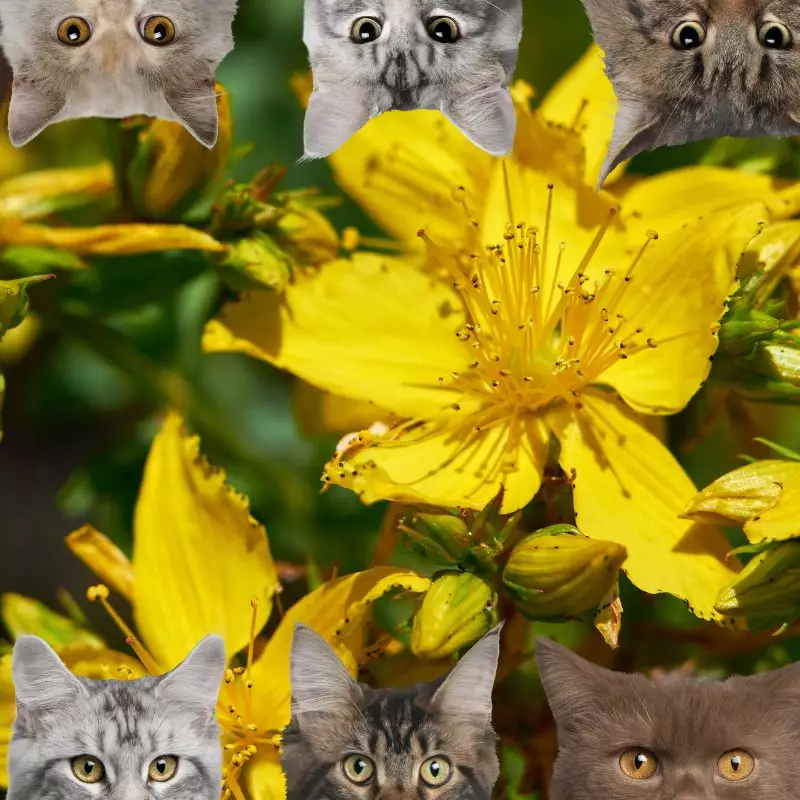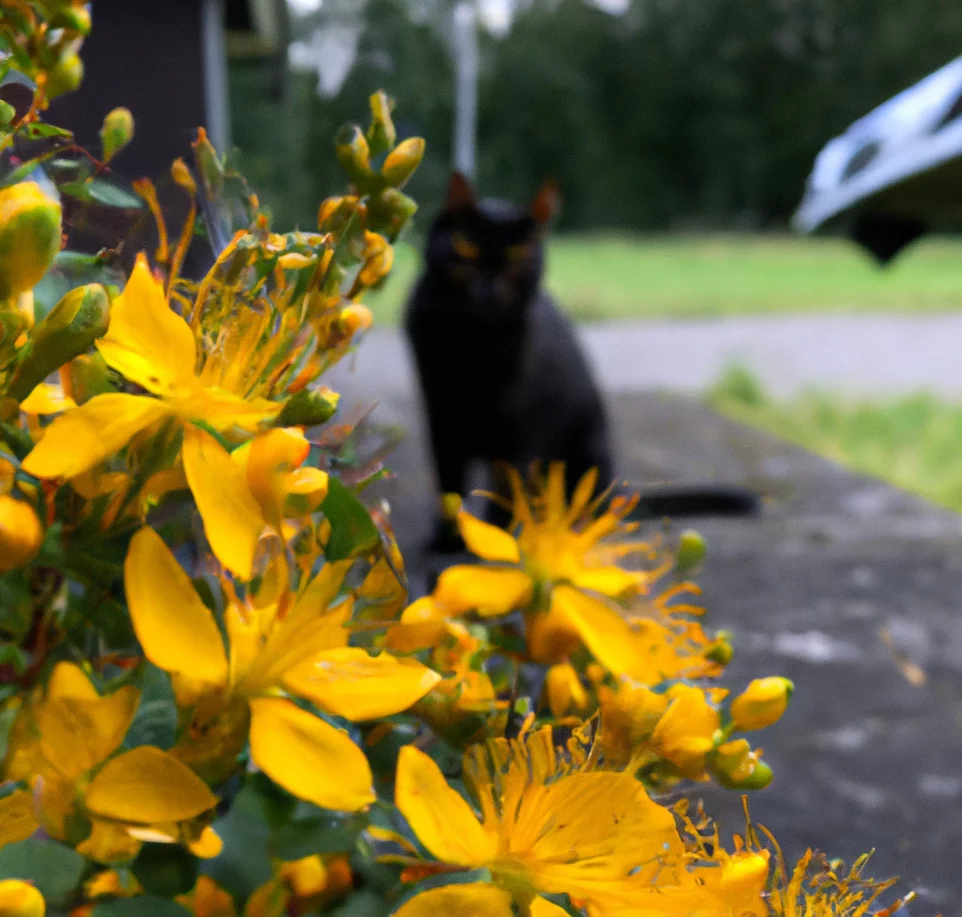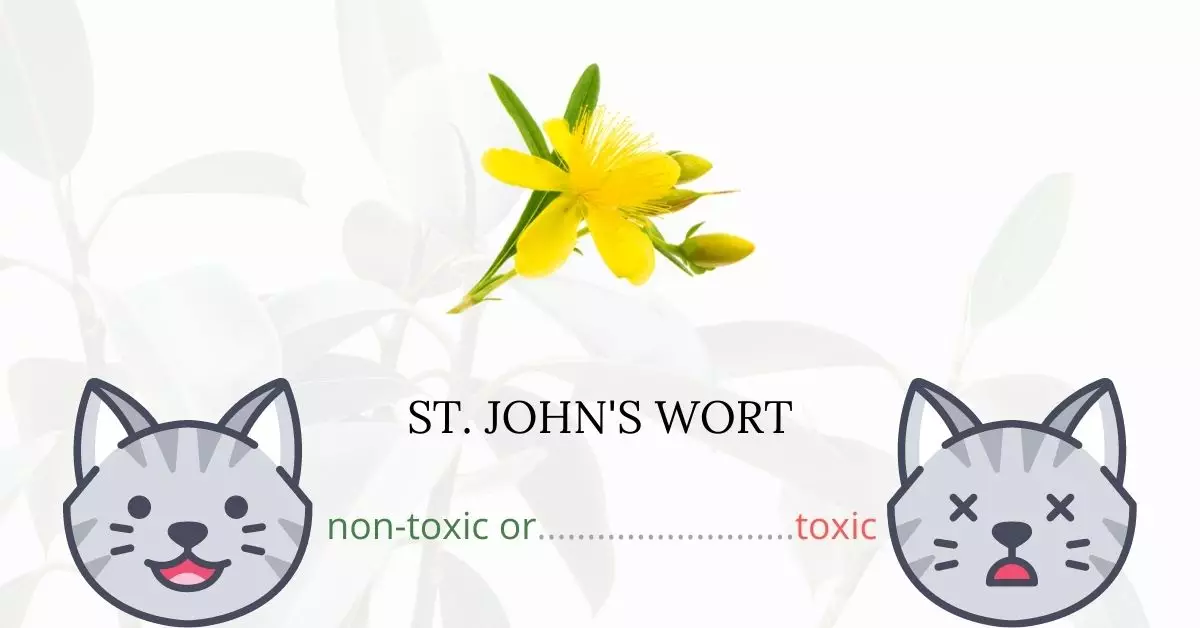St. John’s Wort, a common plant often regarded as a nuisance by horticulturists due to its invasive nature and toxicity, indeed poses a risk to cats due to the presence of a toxic component named hypericin.
To present the most accurate and up-to-date information on the potential risks associated with St. John’s Wort and its effects on cats, this article has been meticulously compiled in collaboration with a team of experienced Doctors of Veterinary Medicine (DVMs). Their invaluable insights, along with information gathered from high-authority websites like ASPCA and PetMD, have allowed for a comprehensive exploration of the subject.
Hypericin serves as a natural deterrent to herbivores who might mistake the plant for food, and cats are no exception. This chemical is a natural hormone inhibitor, provoking abnormal behavior and loss of balance in cats, whether it enters the body through digestion or skin contact. Upon exposure to light, hypericin undergoes a chemical reaction altering the charge of its electrons, subsequently damaging or destroying host cells and leading to burn-like symptoms. The resilience and pervasive nature of this plant, coupled with the toxicity of its tissues, render it a potential hazard to both humans and animals.
Clinical Signs of St. John’s Wort Poisoning in Cats

St. John’s Wort can indeed be severely toxic to cats, inducing a range of clinical signs and symptoms due to exposure, whether it be through contact, inhalation, or ingestion. Here is a detailed breakdown of each clinical sign and the underlying causes when a cat interacts with the St. John’s Wort plant.
- Photosensitivity: The presence of hypericin increases sensitivity to light, causing discomfort and potential harm to a cat’s skin and eyes. This is especially crucial as it can intensify the damage caused by sunlight.
- Blistering and Open Sores: The intensified photosensitivity caused by hypericin can lead to severe skin reactions, such as blistering and the development of painful open sores, especially in areas exposed to light.
- Loss of Coordination and Weakness: Hypericin acts as a natural hormone inhibitor, affecting the cat’s nervous system and leading to noticeable lack of balance and generalized weakness, making movement difficult and uncoordinated.
- Oral Irritation and Drooling: If a cat consumes the plant, the chemical constituents of St. John’s Wort can cause irritation to the mouth and gastrointestinal tract, manifested as excessive drooling.
- Behavioral Change, Agitation, and Depression: The impact of hypericin on the cat’s neurological system can also result in alterations in behavior, displaying as signs of agitation or, conversely, depression, indicating distress or discomfort.
- Gastrointestinal Distress: Consuming St. John’s Wort can induce gastrointestinal upset in cats, causing symptoms like vomiting and diarrhea, due to irritation of the gastrointestinal lining.
Awareness and prompt recognition of these clinical signs are crucial for the early intervention and management of St. John’s Wort toxicity in cats, ensuring their safety and well-being. If you suspect your cat has been exposed to St. John’s Wort, it is imperative to seek veterinary attention immediately.
First Aid and Treatment of St. John’s Wort Poisoning in Cats

The goal of therapy is to prevent the cat from absorbing more hypericin and exacerbating the symptoms. To that end, the vet may provide either hydrogen peroxide to induce vomiting or activated charcoal to absorb any chemicals that remain in the stomach. It’s also conceivable that the doctor would inject fluids into the cat’s body to stimulate urinating, which will help cleanse the cat’s system of toxins.
Recovery from St. John’s Wort Poisoning in Cats

Most cats will recover quickly when therapy is finished, usually within a few days. Those cats that have been seriously burnt by sunlight may, however, require some follow-up visits to ensure their wounds heal correctly. When the cat returns home from the vet, he or she should be placed in a shady area and given time to let the toxin’s effects to wear off.
Prevention of St. John’s Wort Poisoning in Cats
Keeping your cat indoors will lessen the possibility of encountering St. John’s Wort that may be growing near your house. Utilizing cat cages, playpens and other mental stimulating toys will help in keeping them indoors.
If you love plants but have cats at home, check out these lists:





